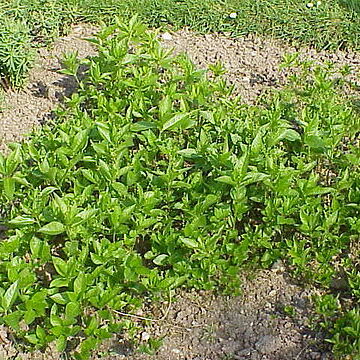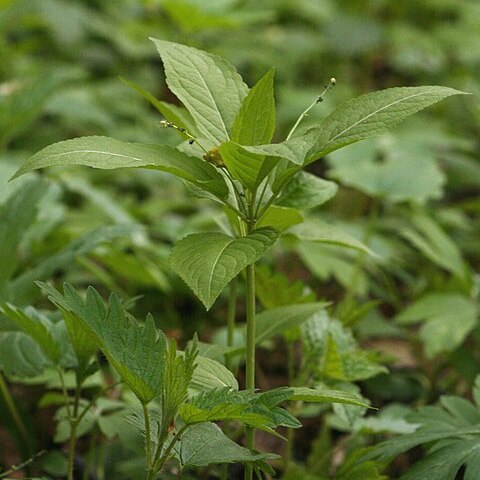Herbs, annual [perennial], dioecious or monoecious; hairs unbranched; latex absent. Leaves opposite, simple; stipules present, persistent; petiole present [absent], glands present at apex; blade unlobed, margins serrate or crenate, laminar glands absent; venation pinnate. Inflorescences usually unisexual, rarely bisexual, axillary, staminate elongate spikelike thyrses, pistillate and bisexual fascicles or cymules [short spikelike thyrses]; glands subtending each bract 0. Pedicels: staminate rudimentary or absent, pistillate present. Staminate flowers: sepals 3, valvate, distinct; petals 0; nectary absent; stamens 8–12(–20), distinct; pistillode absent. Pistillate flowers: sepals 3, distinct; petals 0; nectary 2 glands; pistil 2-carpellate; styles 2, distinct or connate basally, unbranched. Fruits capsules, hispid [glabrous]. Seeds ovoid; caruncle present. x = 8.
Herbs, mostly dioecious, monoecious in Flora area, with slender rhizomes. Leaves opposite; stipules small; leaf blade venation pinnate. Male inflorescence axillary, unbranched, flowers in clusters, usually widely spaced; pedicel very short. Male flowers: calyx lobes 3, valvate, closed in bud, membranous; petals absent; disk absent; stamens 8-20; filaments free; anthers 2-locular, anther-thecae pendulous, base distinct; pistillode absent. Female flowers axillary, solitary or in few-flowered spikes, sometimes with male flowers; sepals 3, imbricate; petals absent; disk segments 2, subulate; ovary 2-locular; styles 2, short, simple, free or basally connate, papillose. Fruit a capsule, 2-lobed. Seeds ovoid or globose, carunculate.
Herbs or small shrubs, usually dioecious; sap watery. Lvs stipulate, opposite, entire, serrate or crenate. ♂ fls: in clusters on long axillary spikes; perianth segments 3; stamens 8-15. ♀ fls: solitary or in clusters, axillary; perianth segments 3; ovary 2-celled with a single ovule in each cell; styles 2. Fr. a 2-celled capsule separating at maturity from the persistent axis; seed smooth or variously sculptured.
Dioecious; pet and disk none; sep 3; stamens 8–20, with short anthers; pistillate fls with 2 elongate staminodia and a bilocular, biovulate ovary; styles separate, laciniate-fringed; seeds 2, delicately carunculate; herbs with opposite, punctate, petiolate, stipulate lvs, the staminate fls in peduncled axillary spike-like infls, the pistillate in short axillary clusters. 7 or 8, Old World.


